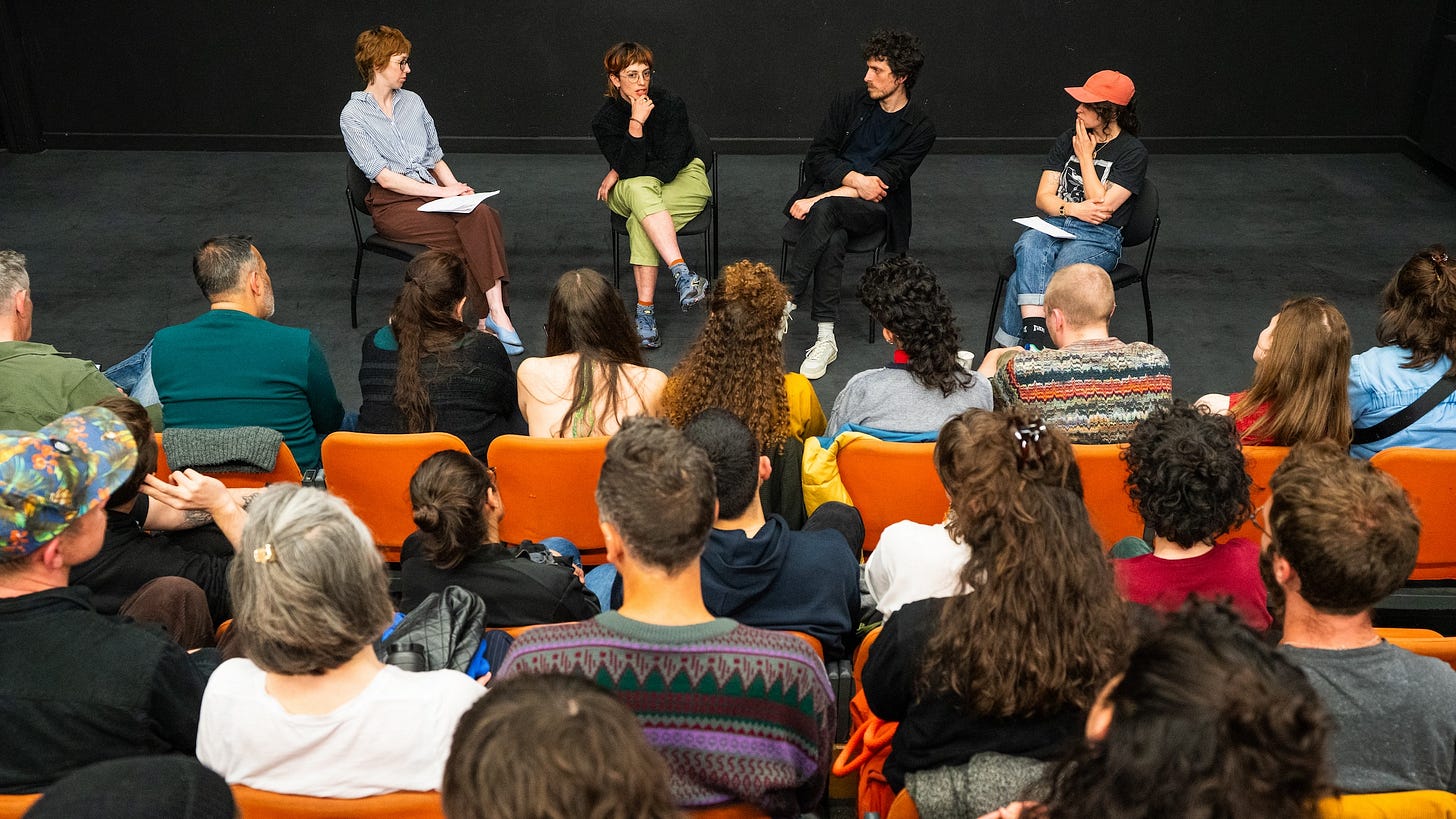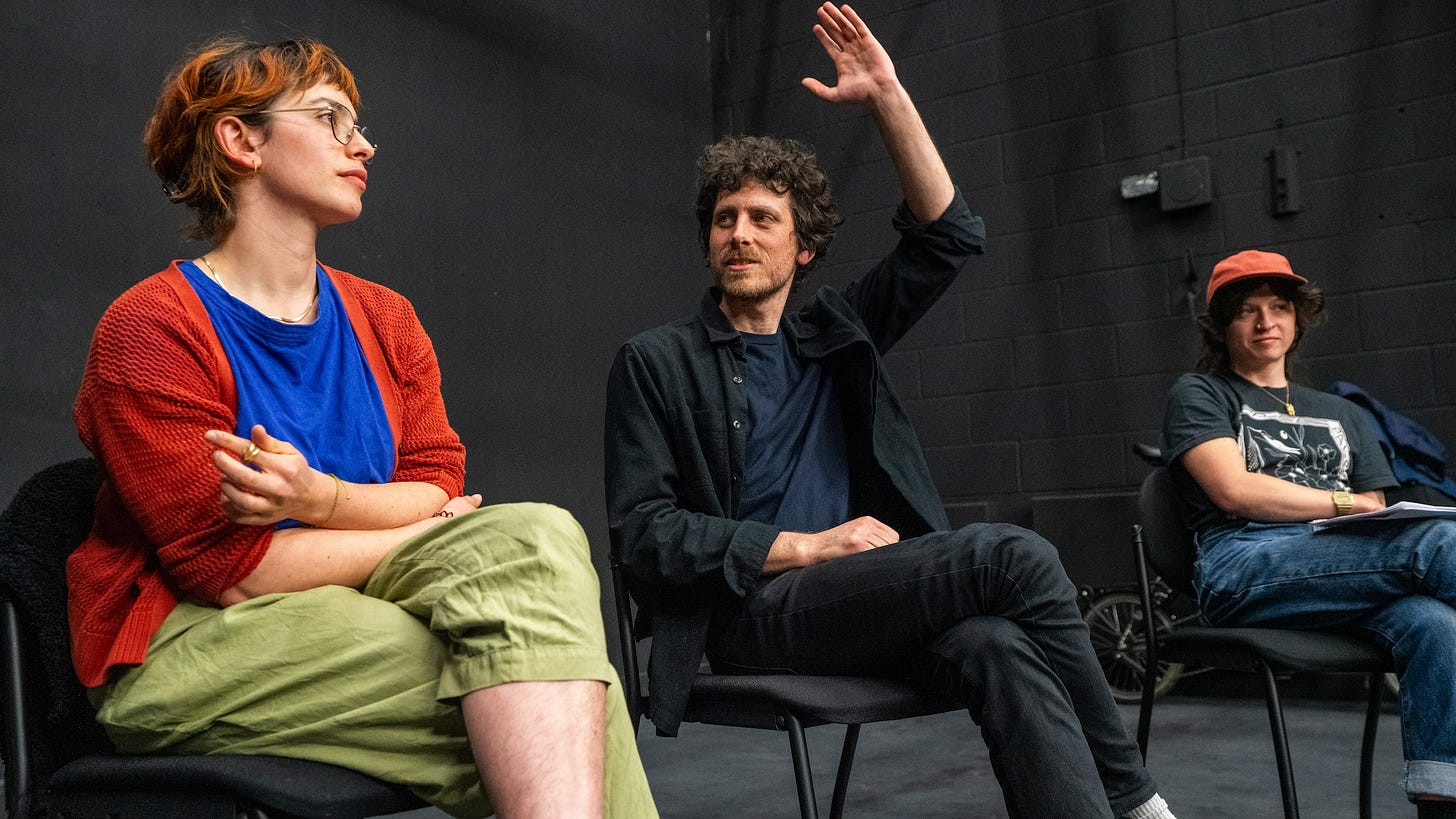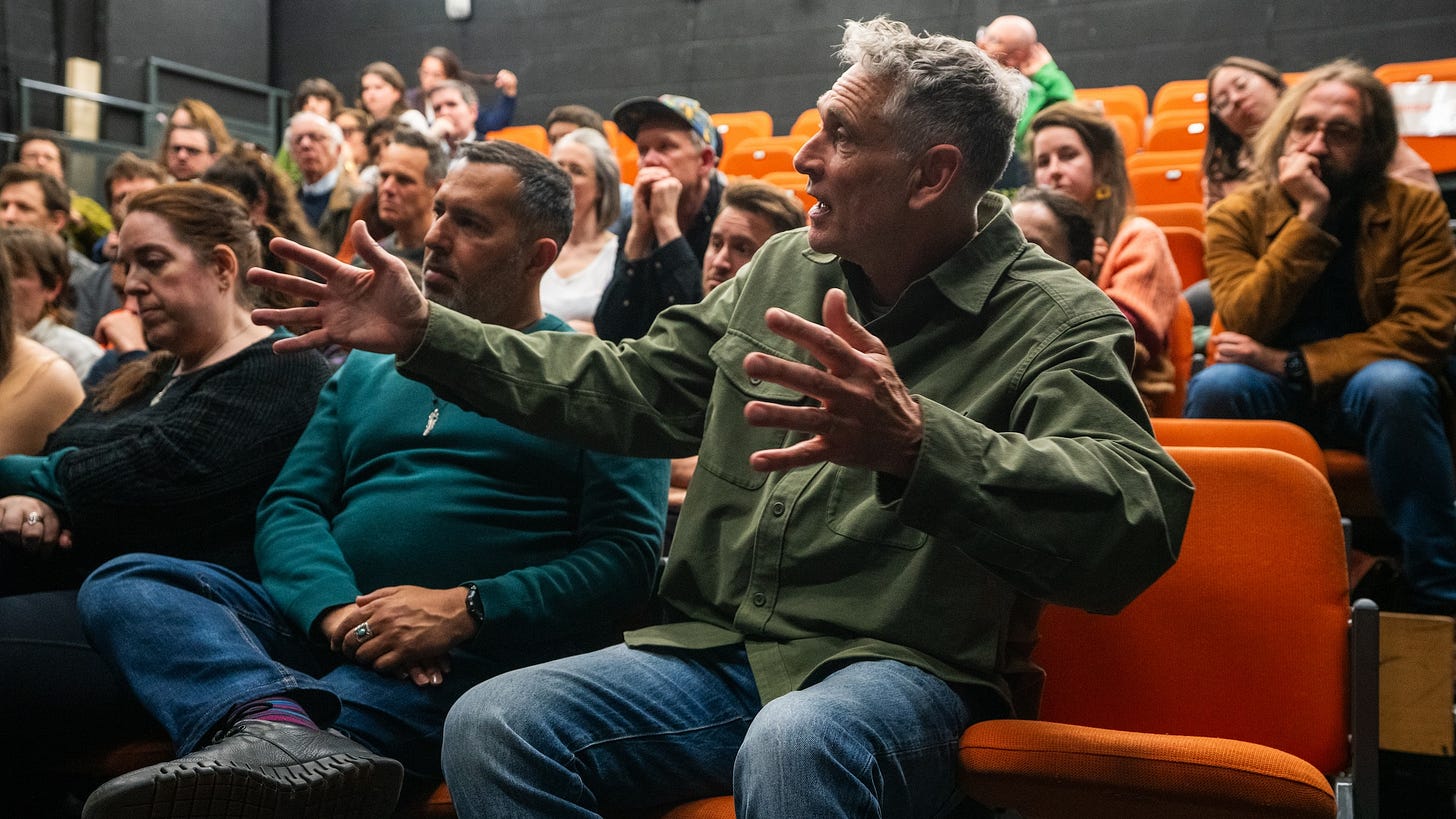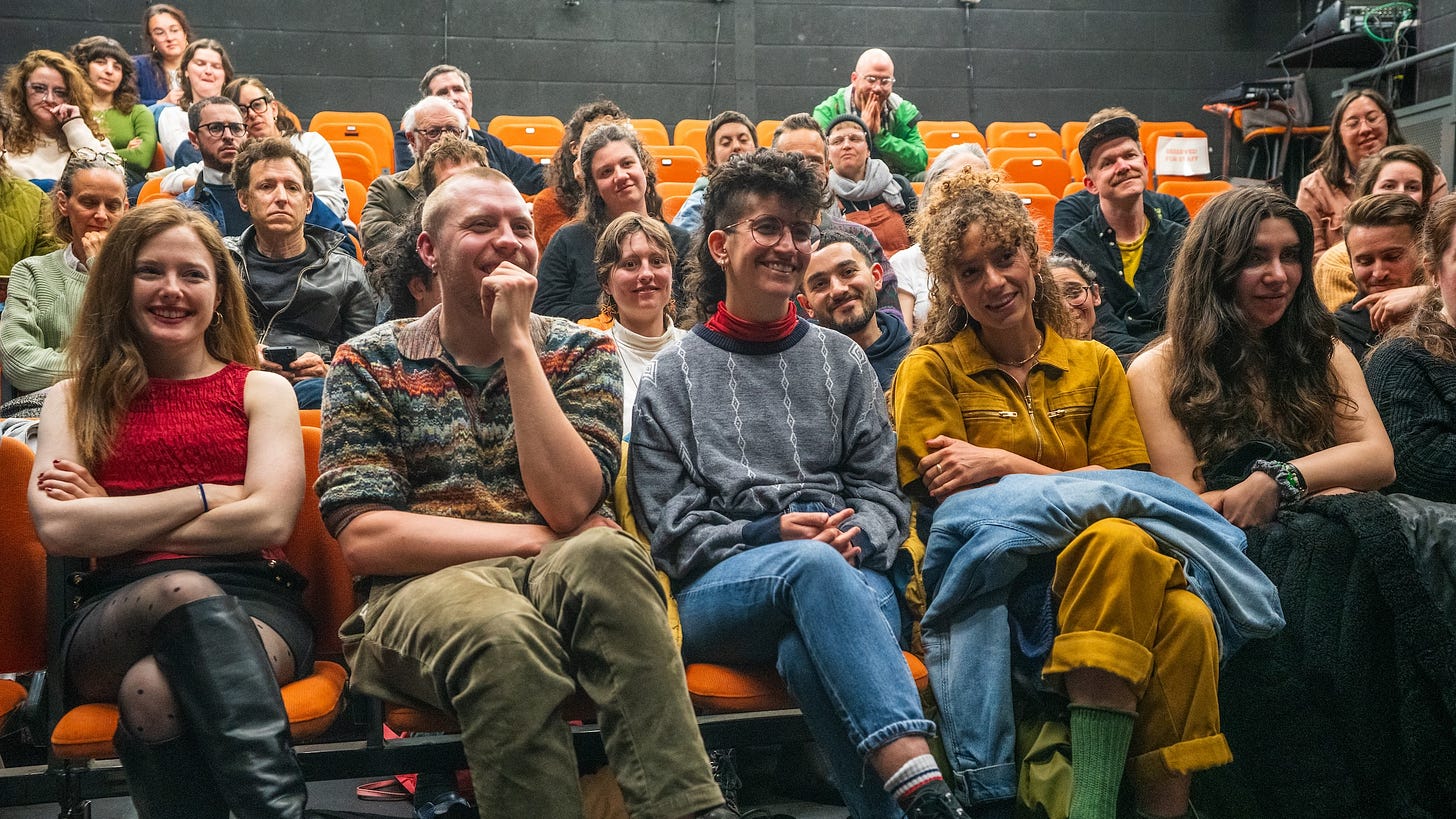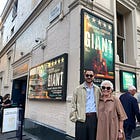'Art must be allowed to be political, subversive, uncomfortable'
British Jewish artists on their new guidelines for confronting antisemitism and censorship in the arts
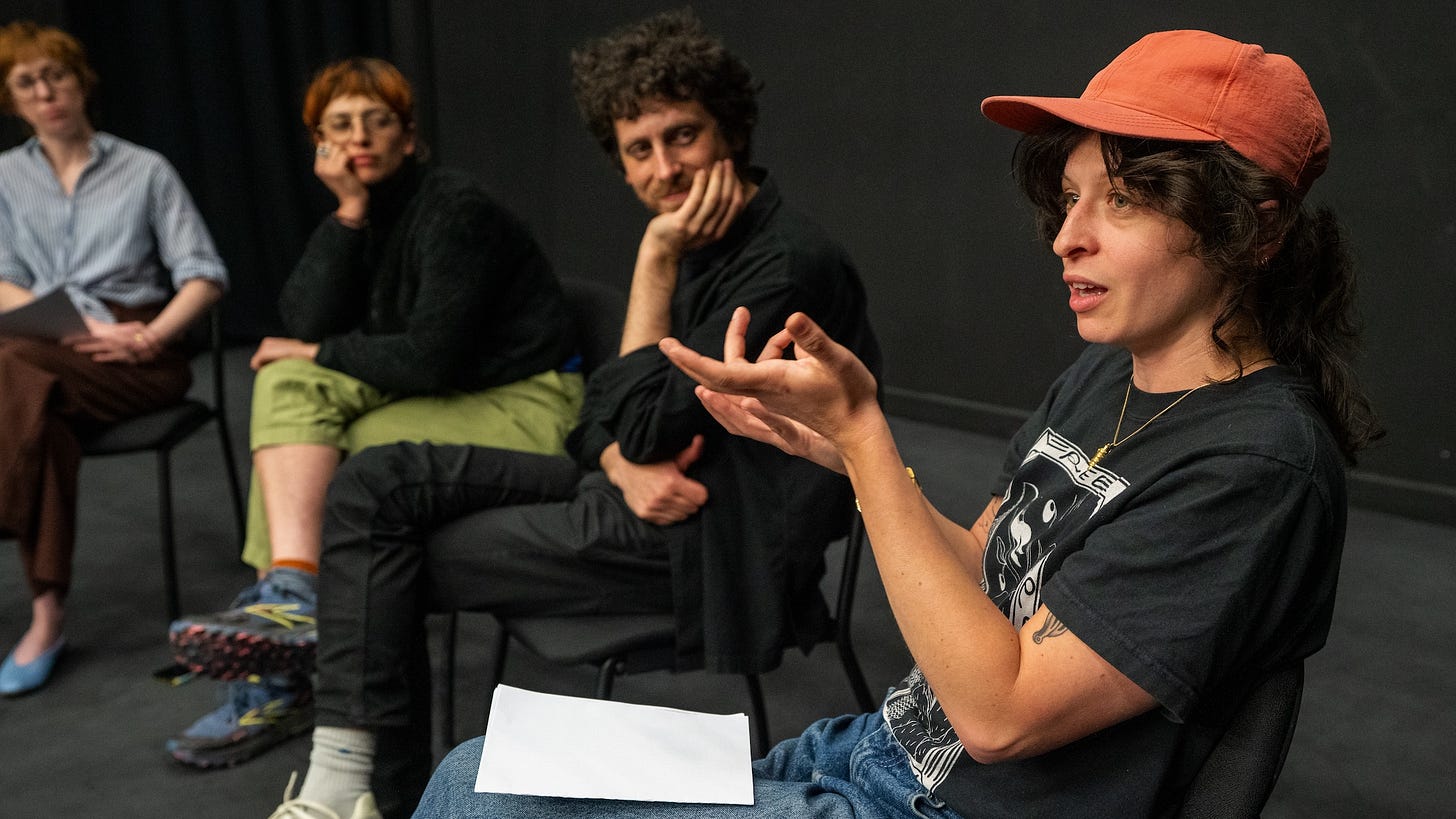
By Holly Williams
When it comes to making challenging, political work, what principles should artists and organisations be guided by? For a new collective, Jewish Artists UK, the answer is both courage and care. To have the courage, to make brave decisions – to be bold, and truthful, in the face of potential backlash or criticism, and in the face of bigotry and prejudice. But also to take the care – to make work with respect, responsibility, and sensitivity.
In an era where both censorship and antisemitism are on the rise – and where both concepts may be weaponised against artists and institutions – a collective of artists has spent the last six months working on a text that can be of actual, practical use for arts organisations and individuals when navigating these choppy waters. Courage and Care: Guidelines on confronting antisemitism and censorship in the arts launched earlier this month, and is now free to access online. Over a hundred Jewish artists and art workers have already become signatories.
But the text is not intended to be some definitive public statement that venues sign up to (or not). Rather, it is intended as a supportive resource, to help start some difficult conversations, and to help arts organisations navigate uncertainty or crisis with confidence and conviction. I know, speaking as a journalist and an editor, that I feel heartened to have such clear, thoughtful, and generous words to refer back to – and I hope others do too.
The guidelines were recently launched at an event at the New Diorama Theatre, where I chaired a panel discussion between Jewish theatremakers Tash Hyman, Uri Agnon, and Becky Plotnek. An edited version of out discussion is shared below. And you can read, download, share, and sign up to the full text of Courage and Care here – but first, it’s worth quoting its introduction in full:
This text is designed as a resource to help institutions, organisations and individuals make better, braver decisions whilst contending with antisemitism and censorship in the arts. It is written from a firm belief that art must be allowed to be political, subversive, uncomfortable – and that bigotry should be challenged. Acknowledging that problematic decisions can be made for a host of reasons – bigotry as well as ignorance – this text is not an attack but an outstretched hand. Antisemitism refers to a spectrum of violence, and we discuss below clear examples of abhorrent behaviour alongside questions of representation, and consider examples of political speech that should be protected from censorship.
We end with a discussion of grey areas and how they might be approached, as that is where so much of art resides. Embracing political nuance, whilst rejecting moral ambiguity, the aim of this text is to chart a path that does not pit minoritised groups against each other, but instead supports diverse voices, and champions bold art.
Holly Williams: Let’s begin at the beginning: why was this text needed? Maybe you could say a little bit about what it is, and the impetus behind it.
Uri Agnon: I think for a lot of us, it is probably very, very clear why this text is needed – but it's still worth hashing out. There’s actually three reasons that pushed us to write this. One of them has to do with seeing antisemitism make its way into a lot of artistic and cultural production: seeing antisemitic representations of Jews and all sorts of conspiracy theories and things like that pop up in culture in different ways. Another reason is the censorship that we see happening: artistic voices getting censored due to an un-nuanced understanding what antisemitism is. And then the third reason is that so much of the discourse around these issues is so utterly unintelligent – and we want to challenge that.
Tash Hyman: And also wanting to create a practical resource that felt robust, and contains lots of information. It's not a statement – it's a resource. It's the start of a conversation with institutions, with artists, with organisations, to talk about how we work with this subject and act in more productive ways.
Becky Plotnek: One of the things that sets this text apart is it's acknowledging that this is a nuanced thing. It's hard work sometimes to decide if something is or isn’t antisemitism, and it's not always possible for there to be a binary answer.
Holly: ‘Courage and Care’ are two brilliant words to help facilitate all of that. Do you think either, or both, of those qualities have been lacking in British theatre and the arts more generally when it comes to tackling antisemitism and censorship recently?
Tash: Those words felt helpful for us. Sometimes making decisions requires this kind of bravery – often it's very public. So I think that's where courage came from. And then the care: this is really about the grey areas. Asking, how are we bringing a lot of thought and sensitivity to the subject? How are we thinking about meaningful representation in terms of the work we're making? Who is involved? How are we doing it? Where are we doing? And that's a conversation we're having across in the theatre industry more generally, and we think really applies to this subject.
Uri: Sometimes, yes, there are raving antisemites putting on a piece of art to say that they want Jews to die, that exists. I don't think they'll find any definition of antisemitism very useful! But many other times, it has to do with carelessness. Because at the end of the day, we live in a culture that is racist and sexist and antisemitic and a whole other list of things. So when we act in that culture, those things can come out. And so by saying that it's about care, it's saying: we're not saying all of you are actually antisemites and you are doing these things because you're trying to be offensive. We're saying: maybe there are some things that you haven't thought about, and that by examining them, you can make more careful work, and better work, and less offensive work.
And a lot of the time when things get censored, it's about institutions lacking courage. Probably most people can think of some examples that became famous in the last few years, where artists’ works have been taken down. But for every one of those things that make it to the newspapers, there's probably 20 or 50 that don't – because most censorship happens when people don't commission someone. I've had venues tell me pretty straight up that, ‘this is great work, we really agree with this, but it's not really the right time for us’, or ‘we're worried about being called out for this or for that’. And that goes for work that calls out antisemitism, and for work that is critical of Israel, for example.
Those conversations are not what you read about in the press, but they're actually where most of the censorship happens. And I think courage is to speak to that: to tell institutions, listen, we know that it's scary and it's really not an easy time to put on political work – you need courage to do that, and we acknowledge that. And we created this resource to try to help you be courageous – to know that you have a text that can help you guide you through those decisions.
Holly: Maybe it would be useful to talk about how you hope organisations or individuals will actually engage with the text?
Becky: It's a practical resource: please use it in whatever way is useful to you! You don't have to adopt it as your own statement; you don't have to say, ‘we agree with this’.
Tash: On the website there is a list of signatories of UK-based Jewish artists, across all different art forms, and that will continue to grow. But we’re not asking institutions to sign up as public signatories. It's more the start of a conversation. It’s an outstretched hand. It's meant to be used in dialogue, or to be used internally, whether it's in shaping policies, in crisis moments, in training…
Holly: How will you be sharing it, and who are you planning to share it with?
Tash: Everyone! If you know people who are UK-based Jewish artists who you think might want to sign up, then you can send it to them. But also if you have connections with people who run institutions and organisations, then maybe you can think about passing it onto them.
Holly: I wondered if you could talk about the impetus for writing this now, and if it did feel more urgent in the light of those conversations that you've been having with venues about their nerves – or in the wider context of what's happening in Gaza, the antisemitism crisis of Labour… It feels like antisemitism and censorship have been brought to the forefront of a lot of organisations’ attention in recent years.
Uri: I moved to the UK in 2019. I can tell you that since 2019, it's been pretty relevant! Things are dire, and therefore things are urgent. I think the text could have, maybe should have, been written 10 years ago…
But one of the things that's been really important for us to keep in our minds throughout the process is that we know that this text isn't going to solve any of the crises that you mentioned, unfortunately. So this text isn't about trying to address them, it's more about asking: how do we create a space in the cultural sphere for artists to engage with these things? Because we do believe that art has a place in trying to solve these things. And that that place is very uncertain at the moment. So we're trying to make that space a bit safer.
Becky: There's so many things that we can't resolve alone. But we're doing what we do have the power to do, to hopefully shift the needle a bit within the industry, and prevent censorship on all sides.
Holly: And how was the text created – who was involved in writing it?
Tash: We created it over about six months. Often, the world feels very urgent, it feels like we need to do things quickly, but we were trying to balance that with creating something really thoughtful and rigorous and considered. It was really important to us to do it in person and not online; we didn't want it to be a Google doc that everyone was adding their comments onto.
Uri: We had four meetings and it wasn't exactly the same people, but generally we always had a sizable group of artists from different spheres, and we’d focus on different parts of the text.
Tash: It's a good exercise in how much agreement can be found when you are having in-person, nuanced conversations – [whereas] the digital space sometimes exacerbates tensions and makes things harder. There were some differences around certain phrasing, but we did all find agreement fairly easily around lots of things.
Holly: I feel like the grey areas that you go through – spelling out some of the things that might be tricky – is really generous in opening up space. Was that something you always thought had to be in there or did that come out of some of those complicated conversations?
Uri: Yeah, it emerged in the conversations – but when it emerged, it was like, oh yes. It needed to be there.
Holly: And when you were casting the net for those conversations, were you seeking people who you knew would have really different opinions, or were you looking to get people already broadly thinking the same to come together and work on something?
Uri: I mean, it's a balance. It was definitely not all people who think alike on everything…
Tash: Impossible!
Uri: We definitely wanted to get a scope of opinions.
Tash: Doing this kind of work, there's a vulnerability to it. And one of the strengths of the process which culminated in this resource is the trust that existed between the people who wrote it together? That we knew that we could have those difficult conversations, that we could hold differences between us, that we could work through those…
Holly: What sort of responses have you had? Were you worried that some people might not be on board with your definitions or guidance?
Becky: We were definitely not worried that people are going to disagree – because of course they're going to! That’s normal and we expect that. To this collective of artists, it didn't feel that what was currently out there was representing us. And so we wanted to write something that felt like it did represent us, and that hopefully would align with the values of other artists out there.
Uri: The response has generally been positive. Some people have signed it. Some people said that they agree with it, but don't feel comfortable signing it, which is absolutely fine. And some people said, ‘well, actually I'm not sure I agree with this or with that…’ But every time, that led to a really interesting, useful conversation. Hopefully it's clear that enough attention and rigour has been put into it to make it something that people feel is worthy of engagement.
But also, just to say, we were very clearly not writing a political manifesto. It's more about opening up a space where people can discuss political opinions.
Tash: It's quite a long text, so there's always going to be one phrase or one section that people go, ‘oh, I would express that slightly differently’. But generally, the reaction has been that it is really clear, and really needed, in how much information there is and how much ground we cover. People have been really grateful for that, which has been nice.
Becky: The words that sum up the text in the preamble are: ‘embracing political nuance and rejecting moral ambiguity’ – I think that's the key to it. There's different ways that people would've written it, but at the core of it is stating what definitely isn't antisemitism, and what definitely is.
Holly: Was there a risk that in having a new set of guidelines that are different to existing definitions of antisemitism – I’m thinking of the International Holocaust Remembrance Alliance one – that you might be creating more confusion for venues, of where do we turn to? Who do we listen to? What's the right approach?
Uri: There are all sorts of texts about antisemitism, including the Jerusalem Declaration on Antisemitism definition – but there isn't a text like this. Because this text has this specific focus of ‘What do those things mean for culture and for art?’ That's really important.
If you're thinking about what to do in a political setting, or in an artistic setting, those are going to be different, because art should be allowed to be different to other forms of discourse. And art can have all sorts of antisemitic things within it that don't have to do with how you phrase this or how you phrase that – they have to do with what sort of nose you put on. And that doesn't exist in the IHRA or in the JDA or in any other guidance, because it is specific to this field.
I don't think there is any other text that deals with what we're dealing with, which is antisemitism, and censorship, in the art world.
Visit the Jewish Artists UK homepage to read, download, share, or add your name. Or email jewishartistsuk@gmail.com to start a conversation.






